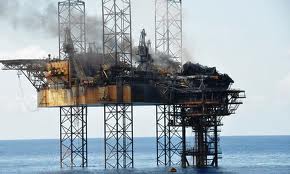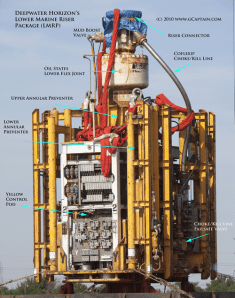While there has been much post-Macondo discussion about the complexity of subsea containment and capping operations for deepwater wells, Macondo was ultimately capped and killed before being intersected by the relief well. The same cannot be said for the shallow water Montara well, which was killed by a relief well after flowing for 74 days.
Capping a flowing well is never routine, regardless of the water depth. However, the safety risks are greater for surface wells. Those risks combined with the low probability of success are why a capping operation was not even attempted at Montara. These were the concerns:
- The risk of a fatality was estimated at an alarming 25-30%.
- The risk of ignition while retracting the cantilever of the West Atlas jackup, a necessary step in the capping operation, was high.
- Only the 20-inch casing was tied-back to the wellhead platform. The 13 3/8″ casing was suspended just above the water surface. (According to testimony during the inquiry, the 13 3/8″ casing was not cemented back inside the 20″ casing.)
- Unless they were going to tie-back the 13 3/8″ casing while the well was flowing (probably not feasible and not mentioned as a possibility in the Inquiry report), they would have had to install a specially made BOP on the 20.” If they were able to install this BOP and shut-in the well, flow would have undoubtedly broached the casing at the 20″ inch shoe. One possible alternative may have been to install a diverter under the BOP and attempt a dynamic kill operation (i.e. direct the flow downwind and away from the rig while pumping mud down the well). This too would have been complex and risky.
Given the very high safety risk and the low probability of success, I believe the regulator and operator made the correct decision in forgoing a capping attempt. The experiences at Macondo and Montara indicate that capping considerations must be taken into account during well planning activities for both subsea and surface wells, and that they latter pose greater safety risks. Given the fire potential, having the wellhead at the surface is not an advantage when it comes to capping a flowing well. It’s better to have the wellhead on the seafloor where the robotic equipment is doing the work.





